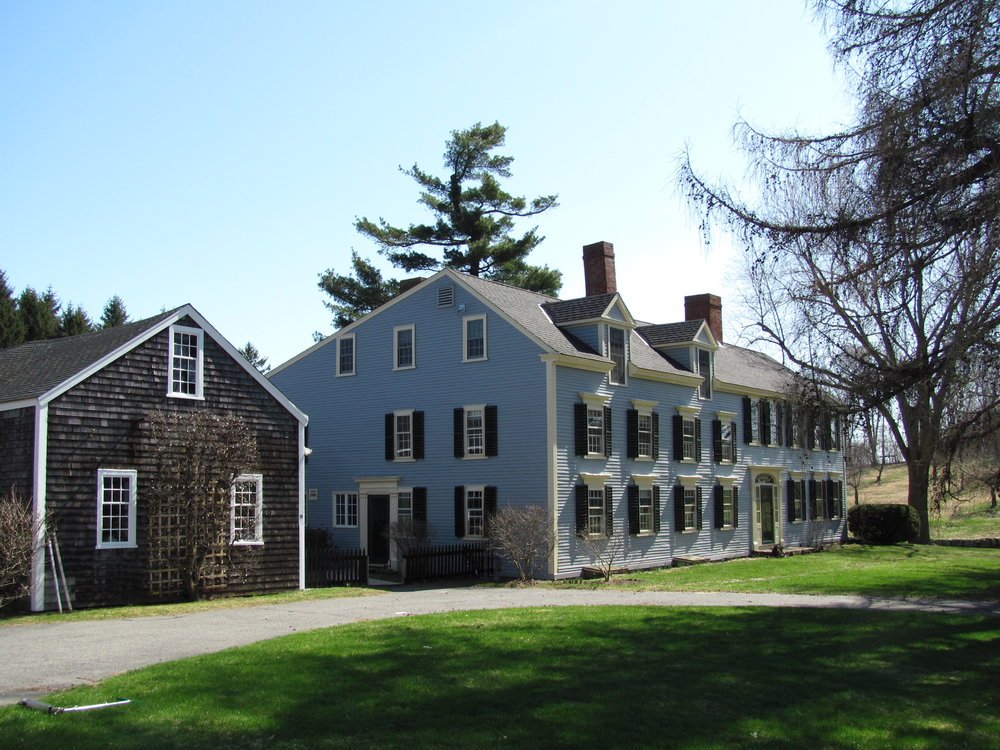
Welcome to Wenham
The town of Wenham, originally settled in 1635 and incorporated in 1643, has retained much of its historic character and rural scenery. It is a town of many open views of farm lands, lakes, woodlands, historic homes and old stone walls that accompany its winding tree-lined roads. It features nearly 300 acres (120 ha) of parks, playgrounds and recreational lands.
Wenham is closely tied to its neighboring town, Hamilton, sharing a school system, library, recreation department, commuter rail station and newspaper. In 2010, the community of Hamilton-Wenham was listed among the "Best Places to Live" by Boston magazine.
Key Details
Settled - 1635
Incorporated - 1645
County - Essex
Zip code - 01984
Area
Total - 8.1 sq mi (21.1 km2)
Land - 7.6 sq mi (19.8 km2)
Water - 0.5 sq mi (1.2 km2)
Population (2010)
Total - 4,875
Density - 600/sq mi (230/km2)
Resources
-
Wenham was first settled in 1635 and officially incorporated in 1643.
English settlers first came to Wenham in the 1630s, but the area had been home to Native American Algonquian peoples for hundreds of years. The Algonquians were a peaceful, agricultural group who planted and stored corn, but whose numbers had been greatly reduced by a massive epidemic, probably smallpox, in the early 17th century. Until recent years, Indian artifacts were found frequently throughout Wenham, and a representative collection is in the possession of the Wenham Museum.
Wenham was originally a part of Salem. Hugh Peters, the minister in Salem, preached to a group on a hill by the Great Pond around 1638, most probably to encourage settlement. The earliest land grants in the Wenham area roughly coincide with Peters' sermon. The hill was leveled in later years to make room for the ice industry at the Great Pond.
In September 1643, the General Court of Massachusetts granted that Wenham should be a town in its own right and send a representative to the General Court. It was the first town to be set off from Salem. Because many of its early settlers came from Suffolk County in England, it is presumed that the name of the town derives from two small villages there—Great Wenham and Little Wenham. Wenham means "home on the moor". A church was formed in October 1644, with John Fiske as pastor and seven families as members.
In those early days, the church and government were one. A small part of the population—those who were church members—controlled both civil and religious life. It was not until 1833 that an amendment to the Massachusetts Constitution separated church and town.
Wenham provided volunteers in King Philip's War in the 1670s, and the French and Indian War in the mid 1700s. In 1774, the town voted to select 15 men as minutemen, and from that time on Loyalists were not welcome in Wenham.
The Industrial Revolution, which changed the face of many Massachusetts towns in the 19th century, passed Wenham by. It remained a small community, with one notable exception. Wenham's ice industry brought the name of Wenham to the notice of people as far away as London, where hotels in the 1850s advertised: "We serve Wenham Lake Ice." Artificial refrigeration and a fire that destroyed the ice house in 1973 brought an end to this unique industry.
Although slaves were owned by Wenham residents in the 18th century, by the 1850s sentiment was fervently in favor of abolition. Between 1862 and 1865, the army camp, Camp Landers, occupied 14 acres (5.7 ha) in Wenham. Part of this tract is now Pingree Field. There were accommodations for two full regiments of Union soldiers with barracks, mess halls, and training fields.
In 1909, Henry Clay Frick, a steel magnate, bought the present-day Iron Rail property so that his daughter Helen could create a vacation home for the mill girls throughout New England. Helen Frick transferred the Iron Rail Vacation Home to the Girls' Clubs of America in 1954, and the town of Wenham bought the property in the 1970s.
Two other Wenham landmarks, the Tea House and the Wenham Museum, have their roots in the Wenham Village Improvement Society. A group of ladies organized the society in 1893 to make Wenham more beautiful by planting more shade trees. They purchased Mr. Henry Hobb's harness shop as a home for a tea house and exchange for selling ladies' handiwork, jams and jellies. The Tea House and Exchange has continued through the years as the successful fundraising arm of the Wenham Village Improvement Society.
In 1921, the Historical Committee of the Wenham Village Improvement Society encouraged the society to buy the 17th-century Claflin-Richards house at the center of town. They did so, and eventually added "the Barn" (which would become Burnham Hall) and the museum. The Wenham Historical Association and Museum became independent from the Village Improvement Society and underwent a major renovation and expansion in 1997.
-
Wenham Museum (1922)
Claflin-Richards House (1690)
Grand Wenham Canal (1917)
Newman-Fiske-Dodge House (1658)
Wenham Lake
The Academy at Penguin Hall
Wenham Tea House
-
Wenham is home to Gordon College, a private four-year Christian college.
The Academy at Penguin Hall is located in Wenham and is the only independent, all-girls college preparatory secondary school North of Boston. Girls in grades 9-12 attend the school. The mission is to educate, enlighten, and empower young women to live and to lead exemplary lives.
The majority of the schools in the Hamilton-Wenham Regional School District are located in Hamilton. Only Buker Elementary School is located in Wenham. However, the school district's administrative offices are located in Wenham.
Boston magazine's 2010 issue showcasing a list of the best public high schools ranked Hamilton-Wenham Regional High School 12th, meaning Hamilton-Wenham's public high school is currently in the Top 10 percent of the state overall. Hamilton-Wenham also had one of the highest graduation rates, at 96.8 percent.
Properties on Market in Wenham
Location
Wenham lies in the south east center of Essex County. It is bordered on the south by Beverly, on the east by Manchester-by-the-Sea, on the north by Hamilton, on the northwest by Topsfield, and on the west by Danvers. Wenham lies 6 miles (10 km) north of Salem and 21 miles (34 km) north-northeast of Boston.

Check out other communities we service
Boston Neighborhoods
Back Bay, South End, Downtown, Fenway, South Boston, Seaport, East Boston, Allston, Brighton, Jamaica Plain, West Roxbury, Roslindale
North Shore
Swampscott, Marblehead, Salem, Peabody, Lynnfield, Wakefield, Reading, North Reading, Middleton, Danvers, Beverly, Manchester by the Sea, Gloucester, Rockport, Essex, Ipswich, Hamilton, Wenham, Topsfield, Boxford, North Andover, Andover
North of Boston
Cambridge, Somerville, Winchester, Medford, Malden, Melrose, Stoneham, Woburn, Saugus, Arlington, Lexington, Belmont, Burlington, Wilmington
West of Boston (Metrowest)
Brookline, Newton, Weston, Wellesley, Sudbury, Wayland, Lincoln, Waltham, Watertown, Dedham, Needham, Sudbury, Framingham, Natick, Westborough, Southborough, Marlborough, Hudson, Ashland, Dover
*content on this page is a mixture of original and pulled from multiple locations including Wikepedia


